 W
WAbashiri City Folk Museum opened as Kitami Kyōdo Yakata (北見郷土舘) in Abashiri, Hokkaidō, Japan in 1936, making it one of the oldest museums on the island. When the museum opened, the collection comprised some three-thousand archaeological and ethnographic objects collected by Yonemura Yoshio (米村喜男), including items from the Moyoro Shell Mound . In 1948, the museum was transferred to the city. A new building was added in 1961 to celebrate 25 years from the original opening. Both the main building and the new building were designed by architect Tanoue Yoshiya, a pupil of Frank Lloyd Wright, and mark the transitions in his style. They are national Registered Tangible Cultural Properties.
 W
WAbashiri City Museum of Art is a registered museum that opened in Abashiri, Hokkaidō, Japan in 1972, as the second art museum, and the first such to be purpose-built, on the island. The collection relates to artists of the Okhotsk region and temporary exhibitions are also held.
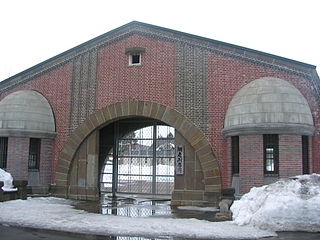 W
WAbashiri Prison is a prison in Abashiri, Hokkaido Prefecture that opened in 1890. The northernmost prison in Japan, it is located near the Abashiri River and east of Mount Tento. It holds inmates with sentences of less than ten years. Older parts of the prison were relocated to the base of Mount Tento in 1983, where they operate as the country's only prison museum.
 W
WThe Ainu Museum , also known as Porotokotan, is a former museum in Shiraoi, Hokkaidō, Japan. The facility began its existence in 1976 as the Shiraoi Foundation for the Preservation of Ainu Culture. In 1984 this was extended to include the Ainu Folk Museum. In 1990 it reopened under the auspices of The Ainu Museum Foundation. The collection included some five thousand folk materials relating to the Ainu and a further approximately two hundred objects relating to minority groups of the north, including the Nivkh, Uilta, Sami, and Inuit. The institution was also involved in the recording and transmission of Ainu-related intangible cultural heritage. The museum closed to make way for the new National Ainu Museum on 31 March 2018.
 W
WAkkeshi Maritime Affairs Memorial Museum is a registered museum that opened in Akkeshi, Hokkaidō, Japan in 1988. The displays document the relationship between the town and the sea, with a particular focus on the fishing industry, and there is also a planetarium.
 W
WThe Chūrui Naumann Elephant Museum opened in Makubetsu, Hokkaidō, Japan in 1988. It commemorates the chance discovery of a fossilized Naumann's elephant in Chūrui, now Makubetsu, on 26 July 1969, during construction work on a farm road: the youth who unearthed the initial piece with his pickaxe crying out "this is an elephant's tooth" (「これは象の歯だ」). During the course of three subsequent excavations, some forty-seven bones were recovered, representing 70–80% of the total skeleton. Reconstructed elephants based on the finds at Chūrui may now be found at twenty-two museums in Japan and the rest of the world.
 W
WEbetsu City Historical Museum opened in Ebetsu, Hokkaidō, Japan in 1991. The museum documents the history of Ebetsu from ancient times, with themes including settlement during the days of the Hokkaido Development Commission and the city's industries. The collection includes two dogū from the Jōmon-period Ōasa III Site, as well two assemblages of Zoku-Jōmon artefacts that have been designated Important Cultural Properties, from the Motoebetsu I Site and the Ebetsubuto Site.
 W
WEniwa City Historical Museum opened in Eniwa, Hokkaidō, Japan in 1990. The display is organized in accordance with six main themes: the land, early peoples, Ainu homeland, opening up the land, the birth of the village of Eniwa, and post-war. The collection includes an assemblage of Jōmon-period artefacts from the Karinba ruins that has been designated an Important Cultural Property.
 W
WEsashi Town Historical Museum opened in Esashi, Hokkaidō, Japan in 2007. Dedicated to the nature, history, and way of life of Esashi, exhibits include Jōmon and Zoku-Jōmon artefacts, objects from the Satsumon culture, goods brought by the kitamaebune, and materials relating to the Battle of Hakodate.
 W
WThe Historical Museum of the Saru River opened in the Nibutani area of Biratori, Hokkaidō, Japan in 1998, the year after Nibutani Dam was completed. The Museum documents the natural and cultural history of life along the Saru River and has information on nearby chashi. The collection includes 123 objects dating from the fifteenth to the seventeenth centuries that were excavated from the Nibutani Site and have been designated a Prefectural Cultural Property. The "Cultural Landscape along the Sarugawa River resulting from Ainu Tradition and Modern Settlement" has been designated an Important Cultural Landscape.
 W
WHokkaido Archaeological Operations Center opened in Ebetsu, Hokkaidō, Japan in 1999. Its aim is to protect, preserve, and utilize buried cultural properties.
 W
WThe Hokkaido Museum of Northern Peoples opened in Abashiri, Hokkaidō, Japan in 1991. Dedicated to the various peoples of the North, across Eurasia and the Americas, the collection includes items relating to the Sámi, Nanai, and Northwest Coast Indians, as well as the more local Okhotsk culture and Ainu.
 W
WHokuchin Memorial Museum (北鎮記念館) is a history museum located in Asahikawa, Hokkaido, Japan. The museum is a JGSDF Public Relations facility displaying as many as 2,500 items concerning the history of the Tondenhei Army, which developed Hokkaido, the 7th Division of the old Imperial Japanese Army, and the activities of the 2nd Division of today's JGSDF. Admission is free.
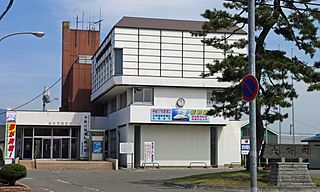 W
WHokuto City Hometown Museum is a museum of local history in Hokuto, Hokkaidō, Japan that came into being after the city's formation in 2006. The museum is successor to the former Ōno Town Historical Museum (大野町郷土資料館), which had a collection of some five thousand items with a focus on agriculture, as Ōno is where rice-farming was brought to Hokkaidō. The collection of Hokuto City Hometown Museum includes artefacts from Yafurai-date that have been designated a Prefectural Tangible Cultural Property.
 W
WThe Kayano Shigeru Nibutani Ainu Museum is a private museum of Ainu materials collected by Kayano Shigeru that opened in the Nibutani area of Biratori, Hokkaidō, Japan in 1992.
 W
WThe Kikonai Town Museum or "Ikarinkan" opened in Kikonai, Hokkaidō, Japan in 2015. The museum is housed in the former Tsuruoka Elementary School, which closed in March 2011. When first opened, the museum exhibited some six hundred objects previously stored by the Kikonai Town Board of Education or donated by members of the public.
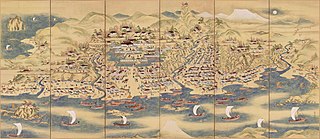 W
WMatsumae Town Historical Museum opened in Matsumae, Hokkaidō, Japan in 1975. The display documents the area's geology and natural history alongside displays related to the histories of the Ainu and of the Matsumae Domain.
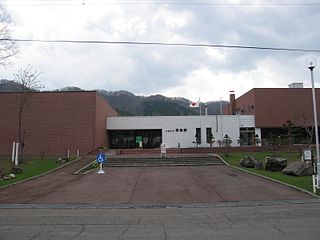 W
WMikasa City Museum opened in Mikasa, Hokkaidō, Japan in 1979. The collection documents the natural history and history of the area and is renowned for its ammonites as well as for the Yezo Mikasa Ryū type fossil, discovered in 1976 and designated a Natural Monument.
 W
WMukawa Town Hobetsu Museum is a museum specializing in fossils in Mukawa, Hokkaidō, Japan. The Museum first opened in 1982 as the Hobetsu Museum (穂別博物館), in what was then the town of Hobetsu; with the merger into Mukawa in 2006, the Museum changed its name.
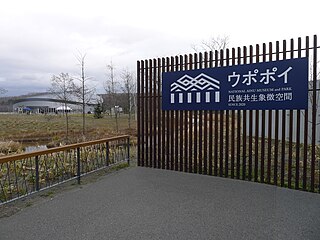 W
WThe National Ainu Museum is a museum located in Shiraoi, Hokkaidō, Japan. The museum's mission is "to promote a proper understanding and awareness of Ainu history and culture in Japan and elsewhere out of respect for the dignity of the indigenous Ainu people, while contributing to the creation and development of new aspects of Ainu culture".
 W
WNemuro City Museum of History and Nature is a museum-equivalent facility in Nemuro, Hokkaidō, Japan. It was established by the City of Nemuro in 2004 and is classed as a general museum, collecting and exhibiting materials relating both to the humanities and the natural sciences.
 W
WNibutani Ainu Culture Museum opened in the Nibutani area of Biratori, Hokkaidō, Japan in 1992. The collection includes 919 items relating to the daily life of the local Ainu that have been jointly designated an Important Tangible Folk Cultural Property; a further 202 items from the same designation may be found at the nearby Kayano Shigeru Nibutani Ainu Museum .
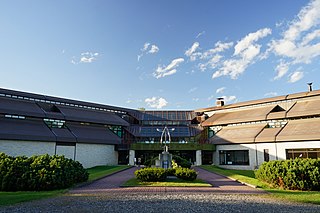 W
WObihiro Centennial City Museum opened in Obihiro, Hokkaidō, Japan in 1982. It exhibits materials relating to the natural history, local history, and industries of Obihiro and of Tokachi more generally. There is an information centre dedicated to the history and culture of the Ainu and, in the museum annex, a centre for buried cultural properties. The collection includes an assemblage of Jōmon finds from the Yachiyo A site that has been designated an Important Cultural Property.
 W
WOkhotsk Museum Esashi opened in Esashi, Hokkaidō, Japan in 1999. Dedicated to the history and natural history of Esashi and the Sea of Okhotsk coast, the collection includes the Important Cultural Property Artefacts Excavated from the Menashidomari Site, Hokkaidō.
 W
WOtaru Music Box Museum (小樽オルゴール堂) is a music museum in the Otaru Orgel-do II building in Otaru, Japan. It includes various examples of music boxes as well as CDs that have music box-esque versions of various songs. Chris Bamforth of The Japan Times wrote that it had an "absolutely phenomenal" variety of music.
 W
WRausu Municipal Museum opened in Rausu, Hokkaidō, Japan in 2011. The museum is housed in the former Uebetsu Elementary and Junior High School building. The display is organized in accordance with six main themes: archaeological materials relating to the Jōmon, Zoku-Jōmon, Okhotsk, Tobinitai , and Satsumon cultures; artefacts from the Matsunorikawa Hokugan Site that have been designated an Important Cultural Property; Rausu's luminous moss, a Prefectural Natural Monument; the Middle Ages and early modern period ; local industries and life, with an emphasis on fishing; and the wildlife of Shiretoko, a UNESCO World Heritage Site, including the white-tailed eagle, Blakiston's fish owl, and whales.
 W
WThe Shellfish Museum of Rankoshi is a museum dedicated to the shellfish of the world in Rankoshi, Hokkaidō, Japan. Ammonites and other aquatic molluscs from Hokkaidō's fossil record are also exhibited. Comprising two buildings, the first opened in 1991 and the second in 1994. In 2017, the Shellfish Museum of Rankoshi together with the University of Toyama announced the discovery of a new species of clione.
 W
WShibetsu Salmon Science Museum opened in Shibetsu, Hokkaidō, Japan in 1991. It is dedicated to the ecology of the world's salmonids and to Hokkaidō's salmon culture. In 1992 there were 130,000 visitors, while in 2011 the number dropped to 50,000.
 W
WShinhidaka Ainu Museum is a museum of Ainu materials in Shinhidaka, Hokkaidō, Japan. The display has an area dedicated to Shakushain's 1669 revolt over fishing rights on the Shizunai River and swords and iron vessels excavated from local chashi. The collection also includes the skull of an Ezo wolf that has been designated a Municipal Cultural Property. Shinhidaka itself is a relatively new town, formed in 2006 from the merger of the former towns of Mitsuishi and Shizunai. Located in what was once Shizunai, the museum first opened in 1983 as the Shizunai Ainu Museum (静内町アイヌ民俗資料館).
 W
WThe Shiretoko Museum opened in Shari, Hokkaidō, Japan in 1978 to mark the 100th anniversary of the municipality's foundation. The collection and displays relate to the natural and human history of the Shiretoko Peninsula.
 W
WWakkanai Karafuto Museum opened in Wakkanai, Hokkaidō, Japan in 2018. The display documents the history of Karafuto and its connections with the area and includes materials relating to the Chihaku ferry.
 W
WYūbari Coal Mine Museum opened in Yūbari, Hokkaidō, Japan in 1980. It documents the importance of coal mining to the local economy from the Meiji period to the Shōwa period. The museum is currently closed.